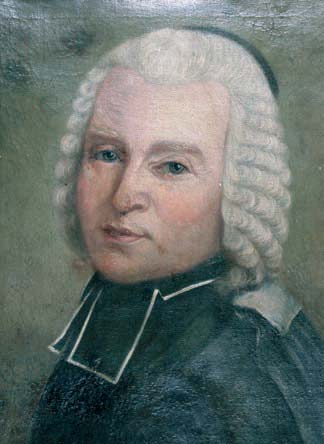<Back to Index>
- Astronomer Nicolas Louis de Lacaille, 1713
- Bluesman Sam "Lightnin'" Hopkins, 1912
- President of Poland Stanisław Wojciechowski, 1869

Abbé Nicolas Louis de Lacaille (March 15, 1713 – March 21, 1762) was a French astronomer.
He is noted for his catalogue of nearly 10,000 southern stars, including 42 nebulous objects. This catalogue, called Coelum Australe Stelliferum, was published posthumously in 1763. It introduced 14 new constellations which have since become standard. He also calculated a table of eclipses for
1800 years. In honor of his contribution to the study of the southern
hemisphere sky, a 60-cm telescope at Reunion Island will be named La-Caille telescope Born at Rumigny, Ardennes,
he was left destitute by the death of his father, who held a post in
the household of the duchess of Vendôme. Therefore, his
theological studies at the College de Lisieux in
Paris were undertaken at the expense of the duke of Bourbon. After he
had taken deacon's orders, however, he concentrated on science, and,
through the patronage of Jacques Cassini, obtained employment, first in surveying the coast from Nantes to Bayonne, then, in 1739, in remeasuring the French arc of the meridian, for which he is honored with a pyramid at Juvisy-sur-Orge.
The success of this difficult operation, which occupied two years, and
achieved the correction of the anomalous result published by J. Cassini
in 1718, was mainly due to Lacaille's industry and skill. He was
rewarded by admission to the Academy and the appointment of
mathematical professor in Mazarin college, where he worked in a small observatory fitted for his use. His desire to observe the southern heavens led him to propose, in 1750, an astronomical expedition to the Cape of Good Hope. This was officially sanctioned by Roland-Michel Barrin de La Galissonière. Among its results were determinations of the lunar and of the solar parallax (Mars
serving as an intermediary), the first measurement of a South African
arc of the meridian, and the observation of 10,000 southern stars. On
his return to Paris in 1754 Lacaille was distressed to find himself an
object of public attention; he withdrew to Mazarin college, where he
worked actively for some years, and there died of an attack of gout aggravated by over-work in 1762. Lalande said
of him that, during a comparatively short life, he had made more
observations and calculations than all the astronomers of his time put
together. The quality of his work rivalled its quantity, while the
disinterestedness and rectitude of his moral character earned him
universal respect. In 1754, de Lacaille was elected a foreign member of the Royal Swedish Academy of Sciences. The crater La Caille on the Moon is named after him. Asteroid 9135 Lacaille, discovered on 17 October 1960 by Cornelis Johannes van Houten, Ingrid van Houten-Groeneveld and Tom Gehrels at Palomar Observatory, was also named after him.